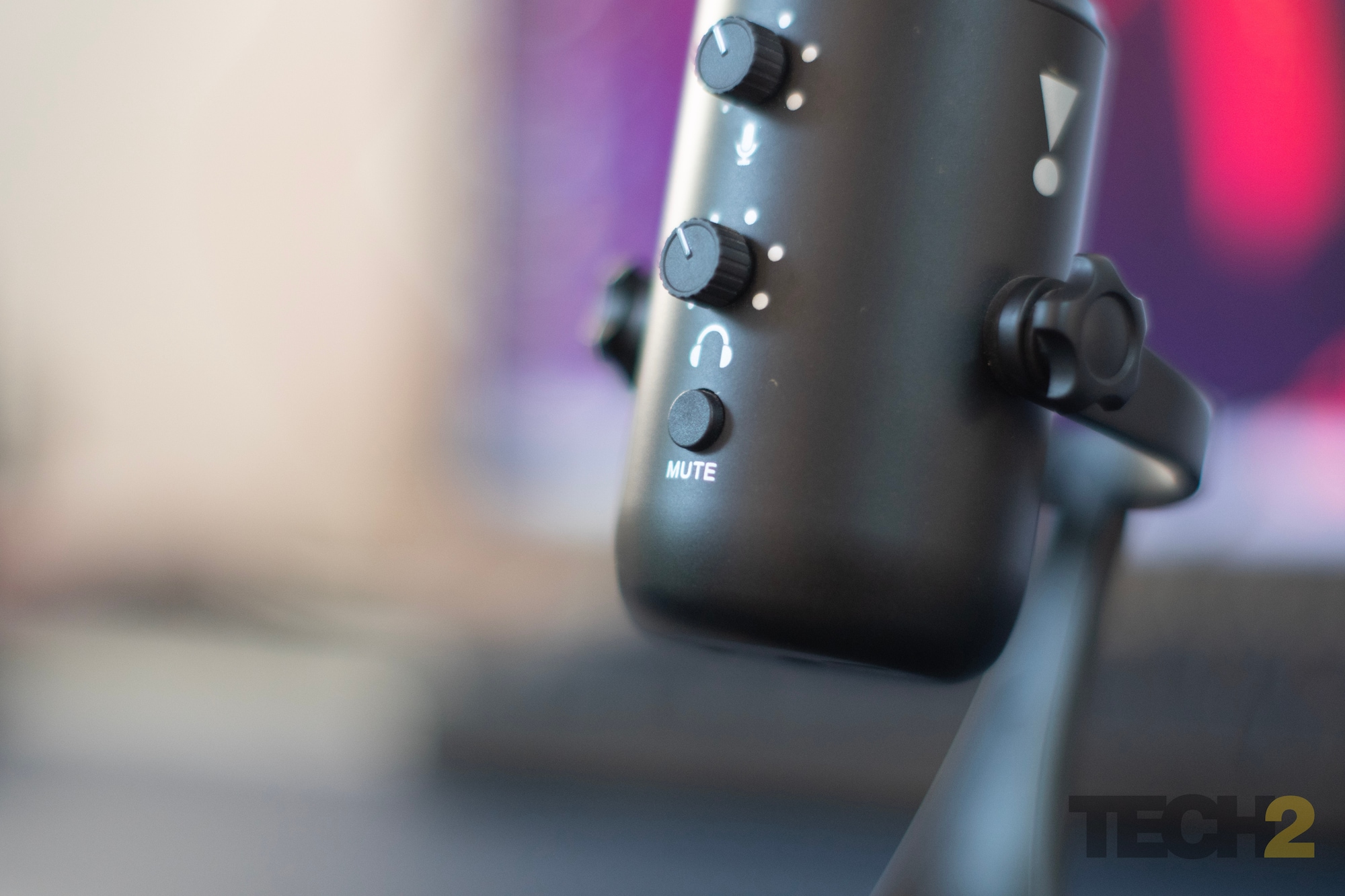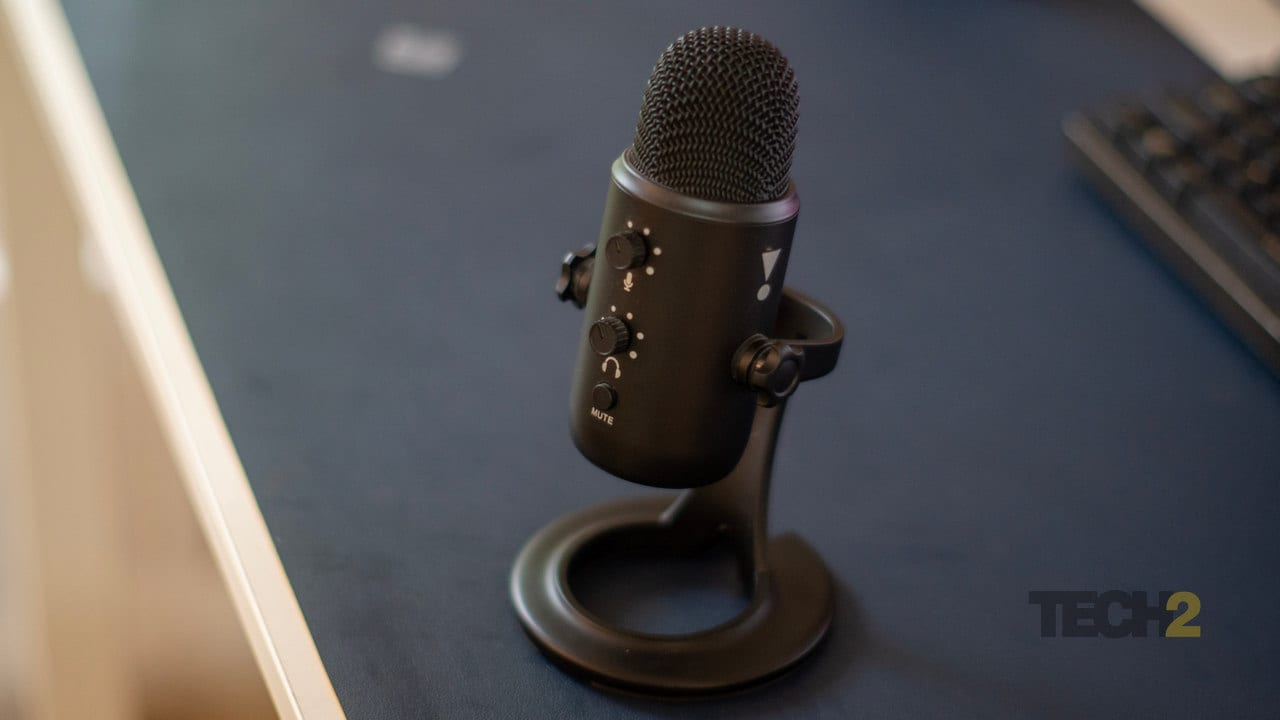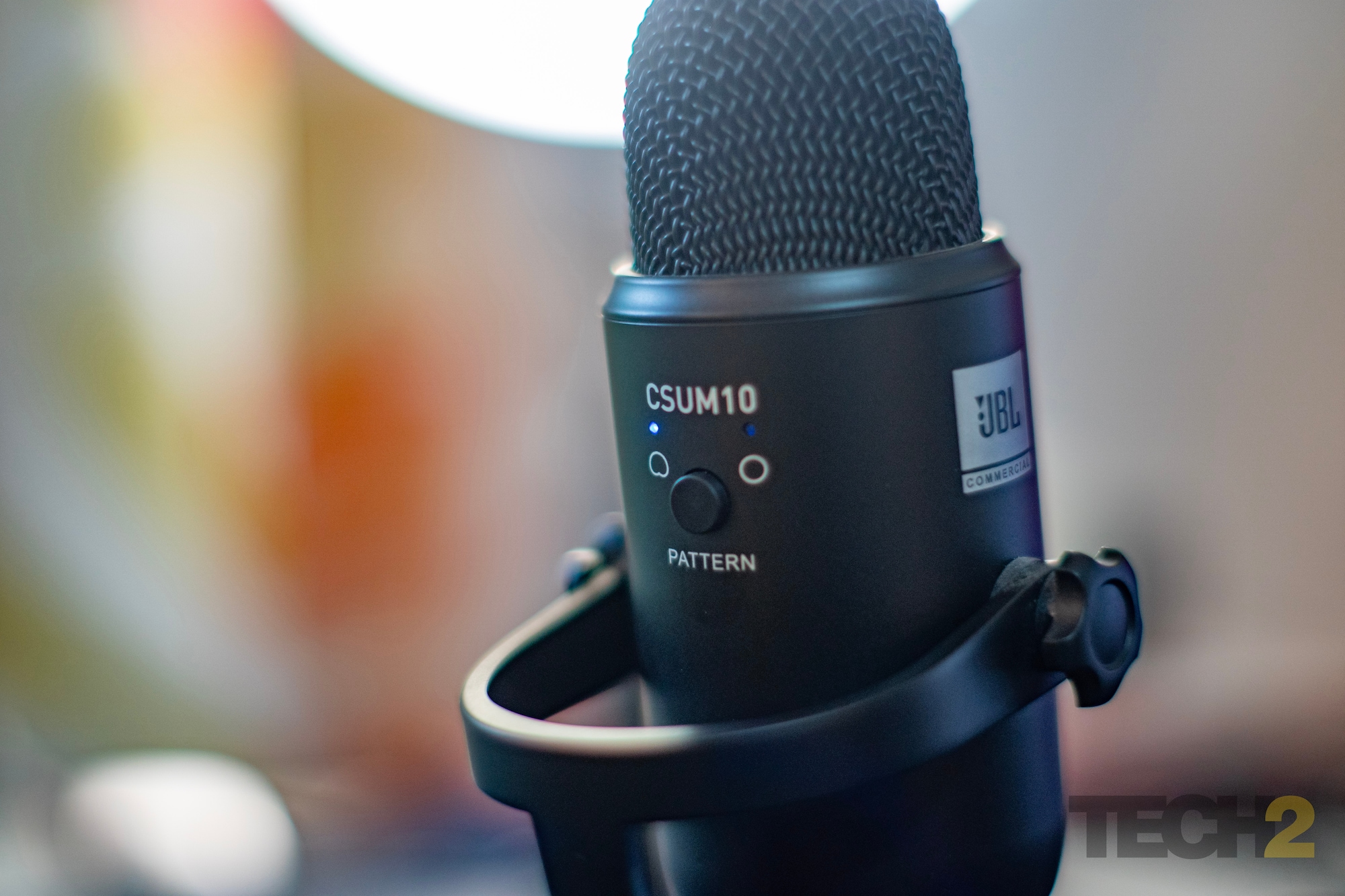
Tushar BurmanJuly 29, 2021 14:58:05 IST
Those who have to literally dedicate the entire room to house the box in a high-tech gear box (not counting test cars parked outside) don’t think they need to go out and buy their own gear. increase. But just as the blockage was slightly relaxed and Amazon began offering non-essential gear, I took out a dusty credit card and bought podcasting gear worth Rs 25,000. All – USB interface, boom arm, XLR microphone, excellent monitoring headphones. However, the rapid output of content never happened. What happened was that the wires were entwined throughout the dining table / desk, leaving little space for an occasional closed experimental meal. The strangely named JBL “Commercial” CSUM10 USB mic, however, removes the confusion.
JBL Commercial CSUM10 Desktop USB Microphone. Image: Tech2 / Tushar Burman
Do you need a dedicated microphone?
Yes and no. With a high quality microphone, you can add radio-like clarity to your voice, but it’s not entirely given. Much depends on your environment and your setup.The same applies to your office zoom Call. If you’re in the echo chamber of a room with kids yelling dogs, your expensive microphone won’t help much.

With a high quality microphone, you can add radio-like clarity to your voice, but it’s not entirely given. Image: Tech2 / Tushar Burman
If desired, you can use the microphone built into your laptop, webcam, or Bluetooth headset. However, to get the right quality, you need to be especially careful, stay close to the microphone and keep things quiet around your house. JBL handles some of these issues.
All-in-one solution
JBL CSUM-10 is basically a microphone with a built-in sound card. It has a headphone jack and two knobs for adjusting the microphone gain (sensitivity to sound) and the headphone volume. The only other port is UBS-C (yes!) That connects to your computer or other device. Then just tell your computer to use a JBL device for input and output and you’re ready to go. This allows you to clean up some of the wiring that is connected to multiple devices. If you’re using speakers, you don’t even need to use the headphone output.

It has a headphone jack and two knobs for adjusting the microphone gain (sensitivity to sound) and the headphone volume. Image: Tech2 / Tushar Burman
The advantage of using a USB microphone is that it usually works on smartphones and tablets as well. JBL was quickly picked up on iPhone and Android devices and could be used in apps such as: Instagram When club house.. Note that many of these apps aren’t designed for external microphones, so as soon as there’s another party attending the conversation, such as a live guest or another speaker in the clubhouse room, inside the phone. Switch to the microphone. But that’s a software limitation. JBL Mike is not blamed here.
Fits the body
The CSUM10 is vaguely similar to the crowd-popular Blue Yeti mic, but much smaller. It’s just below 7.5 inches with a 3.75 inch diameter footprint on your desk. There’s a slot for the cable to come out from behind the mic to keep things clean. This small package effectively replaced the large amount of technology from my desk. Nothing deserves all of these extra wires.

The CSUM10 is vaguely similar to the crowd-popular Blue Yeti mic, but much smaller. Image: Tech2 / Tushar Burman
Also, if you’re using tight shots for your content, the mic is too short to fit in the frame. This can be a drawback if you need a particular “look” during a call or podcast. The unit is all-metal and heavy enough to be hard to hit or tip over. It’s solid and feels like quality. The only plastic on it is in the form of stand knobs, buttons and pivots.
Just right, practical features
I used to use a plain Jane USB mic, but I missed the manual gain control to adjust the volume of the audio. Playing around with Windows PC controls across apps and OS settings is not fun. A simple knob works fine and the CSUM-10 has this. Note that this is a condenser mic and tends to be very sensitive. If the mic is a few inches away from your face, you rarely need to increase the gain. The microphone can be mounted on a stand, but comes with a simple desktop pedestal. Adjustments are limited to tilting in one direction. I used it this way, and I find it completely satisfactory for desktop use. The headphone output is clean and loud, and my AKG K361 monitoring headphones seem to benefit from the slight additional amplification received from the microphone.

If the mic is a few inches away from your face, you rarely need to increase the gain. Image: Tech2 / Tushar Burman
Below the two knobs is also a dedicated mute button with an LED that turns red (from white) when the audio is muted. This is very convenient and easy to forget (as I did well). Look at the LED to make sure you are sending (or not sending). The mute button is a dedicated hardware cutoff and cannot be muted in Zoom or MS Teams like some more advanced headsets. Your sound just dies.
Perhaps one of my favorite features is an additional button on the back of the mic that switches the mic from cardioid to omnidirectional pickup mode. Cardioid pickup is when the microphone picks up sound primarily from the front of the unit and most (if any) from the back. This is the way I use it most of the time when I put it in front of me, and it works very well to drown out keyboard ticks and mouse movements from behind the mic. Omnidirectional mode is useful for desktop interviews with someone or podcasting with guests. Sound is picked up from all directions. Note that this is a condenser mic, so it also picks up a lot of ambient noise.
performance
CSUM10 works great in most situations. It’s easy to put it on one side of the keyboard and point it in the general direction, and you can have a completely clear conference call with the app of your choice. Need more distance? Just add the gain. However, great power comes with great responsibility, so if you don’t want the audio to blow, you’ll need to turn off the fan. Distance and gain need to be experimented with in certain situations. If you really need that radio voice, you’ll need to look at a dynamic mic that’s snugly fixed to your lips, and perhaps a little bit of processing.
While recording a test podcast, I set the gain just below the second index on the knob and it sounded perfect, but it didn’t sound as very crispy as I like. I’ll probably add a little more gain and see how it works. The cardioid pickup pattern was wide enough in front of the mic, so I didn’t have to worry about where to put it. Dead North is ideal, but it didn’t bother me much when I was away from one side.
A great and flexible starting point for audio recording
I’ve tried a variety of recording options, from very simple to unnecessarily complex. JBL CSUM10 has proved to be the ideal solution for most people working and creating at home. Space requirements are modest, with an ideal set of features to allow you to use it on your desktop or in a hotel room on the go connected to your smartphone. Combined with Nvidia’s Broadcast app, which leverages the powerful RTX GPU’s AI capabilities to eliminate noise and echo, in most cases the JBL CSUM10 sounds like I’m in a completely quiet studio. However, the cost of its setup is now significantly higher than the 5,299 rupees it costs for a microphone on Amazon. If you’re new to podcasting, or want to add a decent and practical device for your daily zoom calls to your home office, we recommend this mic.
